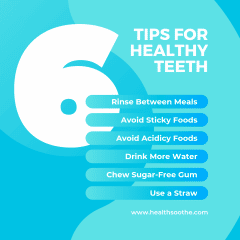What does post-operative instruction mean?
In dental clinics, every patient that comes for treatment is expected to be given dental post-operative
instructions at the end of your treatment. The patients are advised and encouraged the need to adhere and comply with the instructions given. Only when you successfully carried out the instructions that the patient is said to be complying.
Conversely, research studies have shown that very reasonable numbers of patients do not comply with
post-operative instructions. post-operative instruction is a component of oral hygiene
measures. It is very important to know that post-operative instruction is part of the treatment given to you. Post-operative instructions can be given verbally, written or both.
The following instructions are mainly given to a patient immediately after extraction.
These instructions are restricted to that very day.
- Do not spit out and keep swallowing your saliva. This is to prevent spitting out the blood clot.
- Allow the cotton wool or gauze to stay where the tooth was extracted for at least 45 minutes before removing it and do not do any strenuous exercise. This is to prevent you from bleeding.
- Do not put your tongue inside the area where your tooth was removed.
- Keep fingers and any object or food away from your extraction socket. This is because all these introduce bacteria into the mouth and which may result in infection.
- Do not rinse or brush your mouth today. This is to prevent you from dislodging the blood clot.
- In case of bleeding after removing the gauze, put any clean cotton wool material where the tooth was removed and report to a dental clinic.
- Do not eat or drink anything that is excessively hot. This Is to avoid the destruction of a blood clot. If the blood clot is destroyed it may result to dry socket.
- Do not eat or drink anything that excessively cold. This is to eliminate the" loss of sensation of the mouth.
- Avoid forceful spitting, smoking, coughing or sneezing. These can cause the premature loss of a blood clot from an extraction site and that may result in bleeding.
- Avoid alcoholic drink: This is to avoid patients bleeding.Take your drugs as prescribed by the dentist. This is to relieve pain, control infection and promote

POST-OPERATIVE INSTRUCTION FOR THE NEXT DAY:
These are instructions given to the patient who received either curative treatment (e. g extraction)
or preventive treatment (e. g scaling and root planning). These include :
- Brush your teeth in the morning and evening after eating.
- Fill your glass or plastic cup with warm water Add a level teaspoon of salt into the
warm water and stir well. - Rinse your mouth with the warm salt water, allowing it to enter into the site where the tooth was removed ( for extraction) while you rinse the whole mouth very well ( for scaling or root planning), allowing it to stay inside the mouth for seconds before pouring it out.
- Rinse with one Cup in the morning before food and one cup of food.
- Rinse with one cup in the afternoon before food and one cup of food.
- Rinse with one cup in the evening before food and one cup of food.
- Lastly, at night you rinse with two cups before you go to bed.
- This will make a total of 8 cups each day and 8 times for one or two weeks.
Rinse with warm salt water is very important for extraction, scaling and polishing. Root planning, etc. Rinse with warm salt water for 8 times a day i. e. Morning, afternoon, evening and last thing at night before going to bed, for one or two weeks (S). Use of warm salt water plays very important roles in infection control and promoting wound healing.

Isreal olabanji a dental assistant and public health professionals and has years of experience in assisting the dentist with all sorts of dental issues.
We regularly post timely and trustworthy medical information and news on Fitness, Dental care, Recipes, Child health, obstetrics, and more.
The content is intended to augment, not replace, information provided by your clinician. It is not intended nor implied to be a substitute for professional medical advice. Reading this information does not create or replace a doctor-patient relationship or consultation. If required, please contact your doctor or other health care provider to assist you to interpret any of this information, or in applying the information to your individual needs.


